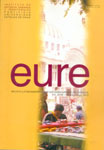Regions-commodities. Crisis and contagion in Chile
DOI:
https://doi.org/10.4067/S0250-71612003008600005Keywords:
regional and local development, regional economy, urban economy, globalizationAbstract
The hypothesis of a new dualism between a sub-global capital city and its "commodities regions" underlies the study of the differential impact of the three last international crises on the regions of Chile. This impact is quantified through four indicators: product, employment, foreign investment and exports, and their variability allow the verification of the dissimilar vulnerability of each region and its dissimilar exposure to the risk of crisis contamination. The study is based on a conceptual frame that states that crisis continue to be more regional-like than global, and that there is a real geography of contamination. This study shows empirical evidence which makes it possible to verify: 1) the reproduction of an unbalance between the north and the south of Chile; 2) the double paradox of Santiago, whose economy is the most diversified and vulnerable, the most recessive and that with the biggest growth; 3) the emergence of Antofagasta as the second regional economy of Chile, displacing Valparaíso and Concepción; 4) the parallelism of Santiago and Antofagasta as regions with the mayor product, the mayor foreign investment and mayor imports; and 5) the "mercosurización" of Santiago, sub-global capital city, and the globalization of its "commodities-regions".
ÍDownloads
Published
How to Cite
Issue
Section
License
Copyright (c) 2003 Revista EURE - Revista de Estudios Urbano Regionales

This work is licensed under a Creative Commons Attribution 4.0 International License.
Al momento de aceptar la publicación de sus artículos, los autores deberán formalizar la cesión de derechos de autor a EURE, según las condiciones establecidas por la Revista.
Ésta establece que el autor autoriza a EURE de manera gratuita, exclusiva e ilimitada a reproducir, editar, publicar, distribuir, publicitar, comercializar y traducir el artículo, a cualquier soporte conocido o por conocer y desarrollar.
Del mismo modo, los autores aseguran que el artículo propuesto es original, no publicado y no propuesto para tal fin a otro medio de difusión.


